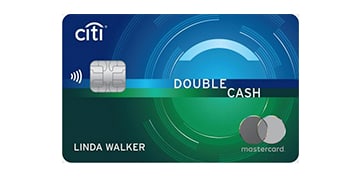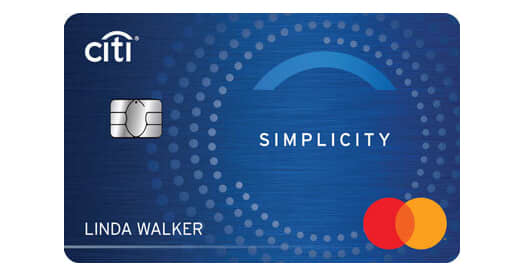- MarketWatch Home
- Picks
- Credit Cards
MarketWatch Picks makes independent recommendations. Here are some things we'd like you to know: We don't include the entire universe of products or services on the market, and clicking on links to offers may result in us receiving compensation. These links don't influence our advice, recommendations or rankings. This compensation may impact the order in which products are listed or otherwise described on this site.
MarketWatch Picks has highlighted these products and services because we think readers will find them useful; the MarketWatch News staff is not involved in creating this content. Links in this content may result in us earning a commission, but our recommendations are independent of any compensation that we may receive. Learn more
By
comments
What experts say you need to know about balance transfer cards before getting started.

A prolonged period of high inflation has had its impact on U.S. debt. So much so that credit card balances just grew by a record 17% over the past year, according to New York Fed’s Quarterly Report on Household Debt and Credit. And, with the average credit card’s annual percentage rate, or APR, hitting a record high 20.33% this year, those interest payments are going to start adding up — and fast.
That could cost you hundreds, even thousands. “We’re seeing more people carrying credit card debt too often to finance day-to-day essentials,” Bankrate senior industry analyst Ted Rossman says, citing a recent report on growing debt balances. “More than a third of U.S. adults have more credit card debt than emergency savings, the highest since we started tracking this in 2011.” Enter balance transfer cards, which offer 0% interest for a set period of time. We’ll go into detail on them below, but these include:
- Citi® Double Cash Card, which offers 0% on balance transfers for 18 months (then 18.99% – 28.99% variable APR), plus cash rewards that let you earn unlimited 1% cash back on all purchases, plus an additional 1% as you pay for those purchases.
- Capital One SavorOne Cash Rewards Credit Card, which offers 3% on balance transfers for 15 months and 4% at a promotional APR that Capital One may offer you at any other time (then 19.99% – 29.99% variable APR), plus 3% cashback on dining, entertainment, various streaming services and purchases at grocery stores, and 1% on all other purchases.
- Citi Simplicity® Card, which offers 0% on balance transfers for 21 months (then 18.99% – 29.74% variable APR), which is one of the longest 0% periods available.
The pros and cons of a 0% balance transfer credit card
The 0% balance transfer credit card helps you eliminate interest charges, for up to about 21 months, on your debt, potentially saving you thousands of dollars.
But if you fail to pay off the debt at the end of the set 0% promo window, that rate can jump up as high as roughly 30%. What’s more, most balance transfer cards charge a one-time transaction fee of 3% to 5%, says LendingTree chief credit analyst Matt Schulz. They also typically require you to do the balance transfer by a certain date (usually about 60 days) to get the 0% offer; and if you don’t pay your bill, the issuer may cancel the offer.
10 of the best 0% balance transfer cards
With the wide number of options out there for this type of promotion, the team at MarketWatch Picks has gathered together the best ones.

Citi Double Cash Card
0% APR on balance transfers for the first 18 months of opening an account (then 18.99% – 28.99% variable APR).
Pros
- No annual fee
- High rewards rate, that lets you earn unlimited 1% cash back on all purchases, plus an additional 1% as you pay for those purchases.
Cons
- No bonuses
- 3% intro fee for each transfer of at least $5 completed within the first four months of becoming an account holder; 5% transfer fees with the same constraints thereafter.
- APR is variable after the intro period

Citi Simplicity® Card
0% APR for the first 21 months of opening an account on balance transfers and 12 months on purchases (then 18.74% – 29.49% variable APR).
Pros
- No annual fee
- Low-rate period is one of the longest availableat 21 months
- No APR penalty for late payments
Cons
- No rewards structure or welcome bonus
- Good to excellent credit is required
- No bonus offers for new cardholders
- 3% transfer minimums for transactions made in the first four months with a minimum transfer amount of $5
- Variable APR after the promo period

Capital One SavorOne Cash Rewards Credit Card
0% APR for the first 15 months of opening an account on purchases and balance transfers (then 19.99% – 29.99% variable APR).
Pros
- No annual fees
- 3% cashback on dining, entertainment, various streaming services and purchases at grocery stores, and 1% on all other purchases
Cons
- 3% transfer fee during the first 15 months; 4% at a promotional APR that Capital One may offer you at any other time
- APR is variable after the intro period

Citi Custom Cash℠ Card
0% APR for the first 15 months of opening an account on purchases and balance transfers (then 18.99% – 28.99% variable APR).
Pros
- No annual fees
- World Elite Mastercard status provides perks such as partner offers with Lyft and DoorDash
Cons
- Low rates beyond bonus categories
- APR is variable after the intro period, depending on your creditworthiness

Citi® Diamond Preferred® Card
0% APR for 21 months on balance transfers and 0% intro APR for 12 months on purchases from the date of account opening (then 17.99% – 28.74% Variable APR).
Pros
- Long intro APR period of 21 months
- No annual fees
- Relatively low ongoing APR for account holders with good to excellent credit
- Free access to FICO® Score online
Cons
- 3% foreign transaction fee
- No ongoing rewards program
- Depending on your credit, a variable APR after the introductory period

Wells Fargo Reflect® Card
0% APR for up to 18 months with a three-month extension available for on-time payments on purchases and qualifying balance transfers (then 17.24% to 29.24% variable APR).
Pros
- No annual fees
- $600 cell phone protection package
- Benefits package that includes 24/7 on-demand roadside assistance, towing or locksmith
Cons
- No rewards
- APR is variable after the promotional period
- 3% transfer fees for the first 120 days and up to 5% after

BankAmericard® Credit Card
0% APR is available for 21 billing cycles, after opening an account on purchases and balance transfers made in the first 60 days.
Pros
- No annual fees
- No penalty APR, so paying late doesn’t automatically raise interest rate
Cons
- Credit requirements are high
- Ongoing rewards are not included
- A balance transfer fee of either $10 or 3% of the total transaction amount, depending on which is greater, is applied
- APR is variable after the offer ends

U.S. Bank Visa® Platinum Card
0% APR on purchases and balance transfers for the first 18 billing cycles.
Pros
- No annual fees
- Offers cell phone protection when you pay your monthly phone bill
Cons
- No rewards program
- Variable APR after the promo period

Bank of America® Customized Cash Rewards Credit Card
0% APR for the first 18 statement closing dates after opening an account for transactions made within 60 days.
Pros
- $200 online cash rewards bonus after making $1,000 in purchases in the first 90 days of opening the account
- Members eligible for 75% more cash back on purchases
Cons
- Sign-up bonuses spending requirement is twice the competitors
- $2,500 quarterly spending limit for 3% and 2% categories
- Variable APR after the promo period
How to ensure you pay off your balance before the 0% period ends
“Divide the balance by the number of months in the promotional period to identify the monthly payment that will help you demolish the debt by the time the offer ends,” says NerdWallet credit cards expert Melissa Lambarena. She adds that “it’s important to pay on time because the issuer can cancel your promotional offer if you don’t. Also, avoid putting new purchases on the card to stay on track with your progress.”
Make sure, too, that you transfer your balance to the new card relatively quickly. Schulz adds that “many cards require you to do the transfer by a certain date in order to take advantage of the 0% offer. The deadline can be 60 days or longer, so it allows plenty of time, but it is still important to know what the cut-off date is.”
How to qualify for a balance transfer card
Other key factors to keep in mind are that you can typically only transfer your balance to a different issuer and only those with good credit scores, roughly 690 or above, can typically qualify. “If you can qualify with good credit, look for a balance transfer credit card that has no annual fee, a low balance transfer fee of 3% or less and a long enough interest-free window to pay off debt,” Lambarena said. “To determine if this option is worth it, you’ll have to do the math to know if the balance transfer fee costs less than the interest charges you’ll pay with your current card over time.”
The content on this page is accurate as of the posting date; however, some of our partner offers may have expired.
The advice, recommendations or rankings expressed in this article are those of MarketWatch Picks, and have not been reviewed or endorsed by our commercial partners.
Read Next
Read Next
‘I am at a loss.’ I’m a 68-year-old widow with $3,200 per month in Social Security and $2.6 million saved. My adviser has me in over 50% equities and tells me to stay the course. Is that wise?
Have an issue with your financial adviser or looking for a new one? Email picks@marketwatch.com.
More On MarketWatch
- I’m 67 and get $2,100 a month in Social Security. I have been in a relationship for 33 years, but his son doesn’t like me and I have health issues. Now that we are considering marriage, who can help us figure this out?
- ‘I am paralyzed with fear.’ My wife and I are 60, with 2 homes, pensions and $950,000 saved for retirement. We want an adviser but fear the wrong choice. What’s our move?
- I’m 61 with $1.4 million, but have $50,000 in credit card debt. I want to retire in a year, and a new adviser promises he can beat the old one’s returns by $300,000. Should I buy it?
- These 2 banks are paying 6.17% on their savings accounts — and 8 more savings accounts with the highest APYs in January 2024
About the Author
Andrew Shilling
Andrew Shilling is a reporter for MarketWatch Picks, writing about savings, retirement, investing and other personal finance topics. Previously, he was an associate managing editor atFinancial Planning magazine and both a reporter and editor at the Queens Ledger/Brooklyn Star Newspaper Group.
The comments below are not provided or commissioned by any bank featured on this page. Comments have not been reviewed, approved, or otherwise endorsed by any bank. It is not the banks’ responsibility to ensure all posts and/or questions are answered.
Community Guidelines • FAQs
Partner Content
This content was created by a business partner of Dow Jones and researched and written independently of Marketwatch newsroom. Links in this article may result in us earning a commission. Learn More
- Best Free Checking Accounts for January 2024
- Best Personal Loan Rates of January 2024
- The Best Pet Insurance Companies (January 2024)
- Best Car Insurance Companies
- Best Car Shipping Companies
- Best Extended Car Warranty
- The Best Solar Companies of January 2024
- Cheap Renters Insurance Companies | January 2024
- Best Auto Loan Rates
- 8 Best Home Warranty Companies of January 2024
- Best High-Yield Savings Accounts of January 2024
- Best LLC Services (2024 Reviews and Rankings)
As an expert in personal finance and credit cards, I bring a wealth of knowledge and experience to the table. I've closely followed market trends, financial reports, and credit card offerings, making me well-versed in the subject matter. I have a deep understanding of the intricacies of credit card terms, including annual percentage rates (APRs), balance transfer options, rewards programs, and potential fees. My expertise extends to advising individuals on managing credit card debt, optimizing rewards, and making informed financial decisions.
Now, let's delve into the concepts presented in the MarketWatch article on balance transfer cards by Andrew Shilling:
-
Impact of High Inflation on U.S. Debt: The article starts by highlighting the impact of a prolonged period of high inflation on U.S. debt. It mentions that credit card balances grew by a record 17% over the past year, according to the New York Fed’s Quarterly Report on Household Debt and Credit.
-
Rising Average Credit Card APR: The average credit card APR is noted to have reached a record high of 20.33% in the current year. The article emphasizes that such high APRs can result in significant interest payments, making it crucial for individuals to explore alternative solutions.
-
Introduction of Balance Transfer Cards: In response to the rising credit card debt and high APRs, the article introduces balance transfer cards as a potential solution. These cards offer 0% interest for a specified period, providing a temporary reprieve from interest charges.
-
Highlighted Balance Transfer Cards: The article features several balance transfer cards, including the Citi® Double Cash Card, Capital One SavorOne Cash Rewards Credit Card, Citi Simplicity® Card, and others. Each card is briefly described, along with its introductory 0% APR period and subsequent variable APR.
-
Pros and Cons of 0% Balance Transfer Cards: The article outlines the advantages and disadvantages of utilizing 0% balance transfer credit cards. It notes that while these cards can help eliminate interest charges for a certain period, failing to pay off the debt within that timeframe can lead to a substantial increase in interest rates.
-
List of 10 Best 0% Balance Transfer Cards: MarketWatch Picks provides a curated list of the 10 best 0% balance transfer cards, offering a concise summary of each card's key features, pros, and cons. The list includes cards from various issuers, such as Citi, Capital One, Wells Fargo, Bank of America, and U.S. Bank.
-
Advice on Paying Off Balance Before the 0% Period Ends: The article offers advice on ensuring timely repayment before the 0% promotional period ends. It suggests dividing the balance by the number of months in the promotional period to identify the monthly payment needed to pay off the debt. Timely payments are emphasized to avoid the risk of the issuer canceling the promotional offer.
-
Qualification for Balance Transfer Cards: Key factors for qualifying for a balance transfer card are discussed. It mentions that individuals typically need a good credit score (around 690 or above) to qualify. The importance of considering factors like annual fees, balance transfer fees, and the duration of the interest-free window is highlighted.
By combining my expertise with the information presented in the article, I aim to provide a comprehensive understanding of the dynamics surrounding balance transfer cards and their role in managing credit card debt.